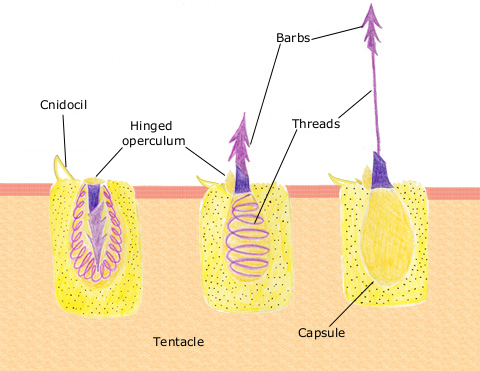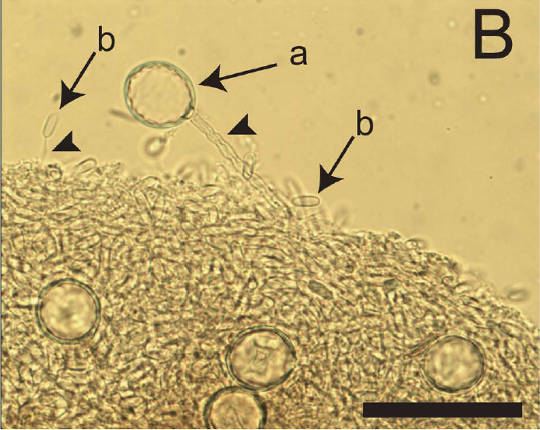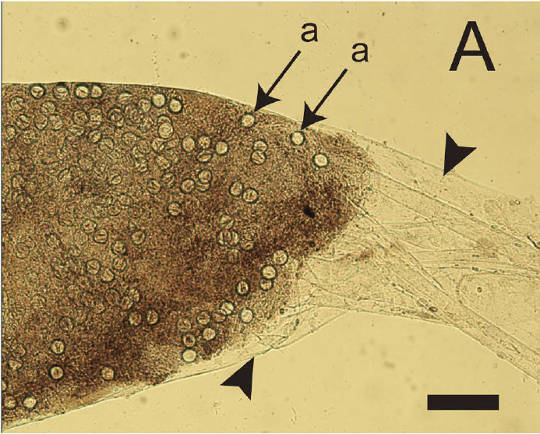This article was published in Scientific American’s former blog network and reflects the views of the author, not necessarily those of Scientific American

To see the larva of a spiny or slipper lobster is to see an alien creature who devours jellyfish whole -- tentacles first.
On supporting science journalism
If you're enjoying this article, consider supporting our award-winning journalism by subscribing. By purchasing a subscription you are helping to ensure the future of impactful stories about the discoveries and ideas shaping our world today.
These bizarre larvae – an anomaly among crustaceans -- are called phyllosomas (literally, sheet or leaf body). They have the appearance of transparent squished spiders with silver dollar bodies. Such larvae can reach palm-sized before they dramatically moult into a form that actually resembles a small lobster.
Not all lobsters do this, however. Phyllosomas occur only in the group of lobsters called spiny(rock), slipper, or coral lobsters, which are not closely related to true lobsters. You can tell a true lobster by those large, succulent, crackable claws, while the lobsters in these groups lack enlarged front claws but otherwise look more or less like lobsters -- and are reportedly also delicious.
There’s only one little problem. The tentacles that these phyllosomas slurp up like ramen are loaded with harpoon cells that explosively inject venom, as anyone who has suffered a painful jellyfish sting can attest.

How nematocysts work. they explosively evert when triggered by a push on the cnidocis. Credit: NOAA Ocean Service Education
How is the little larva able to withstand what scientists have politely termed “internal envenomation”?
That was the question scientists at Tokyo University of Marine Science and Technology and Hiroshima University set out to answer in a paper published recently in Plankton and Benthos Research. They figured there were three possibilities. First, the larva could have some way of eating tentacles without inducing the nematocysts to fire. Certain sea slugs do this, then stash the nematocysts in special packages called kleptocnidae (“stolen cnidae”) that they display on their skin for their own defense.
Second, the larvae could be encasing the nematocysts in some sort of protective membrane. Adult slipper lobsters are known to possess such an ability.
Finally, the larvae could have evolved some sort of chemical resistance to venom, possibly by possessing mutated target proteins that make them resistant to the poison.
The team tested these hypotheses by checking to see whether the nematocysts in Japanese smooth fan lobster larva poo were either discharged or surrounded by a membrane. Then they injected larvae with purified venom to see what happened.
The nematocysts in the feces had indeed been discharged, ruling out that idea that they were just reeeeeally careful chewing their food.

Discharged nematocysts in the feces of the smooth fan lobster. Small and large nematocysts (a and b) have discharged their harpoon tubules (arrowheads). Scale bar 50 micrometers. Credit: Kamio et al. 2016
And injecting crude venom extract into the phyllosomas was fatal nine out of ten times.
But the feces were indeed covered with a sheath that the scientists interpreted as a peritrophic membrane, a secreted barrier made of organic material, but not whole cells, that shields the gut from food that fights back. No discharged nematocysts were seen outside this layer.

Nematocysts (a) enclosed in a peritrophic membrane (arrowheads). Scale bar 100 micrometers. Credit: Kamio et al. 2016
One question I have that is not answered by this study is how the larvae digest their food if it is sealed inside a seemingly impenetrable membrane. Perhaps the membrane has a micropore structure to allow digested food particles – but not toxic jellyfish harpoons -- to pass through, a bit like the bag around boil-in-bag rice?
Or perhaps the membrane has openings that are far away from the fecal pellet – beyond the reach of an individual nematocyst.
Or perhaps only the nematocysts are somehow segregated into sealed sacks, while the rest of the jellyfish is left outside for digestion. But if that is true, how does the gut know how to precisely separate the nematocysts from the rest of the jellyfish and place them so carefully in the membranes?
However they do it, it is amazing. These jellyfish-eating lobster larvae are somehow making internal biohazard bags that prevent suicide by sushi.
Reference
Kamio, Michiya, Kaori Wakabayashi, Hiroshi Nagai, and Yuji Tanaka. "Phyllosomas of smooth fan lobsters (Ibacus novemdentatus) encase jellyfish cnidae in peritrophic membranes in their feces." Plankton and Benthos Research 11, no. 3 (2016): 100-104.